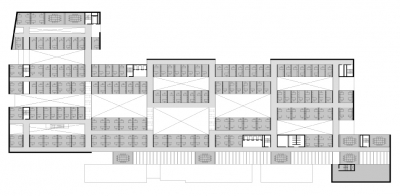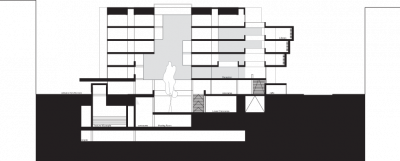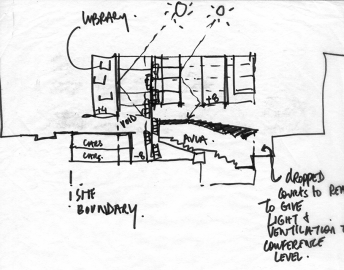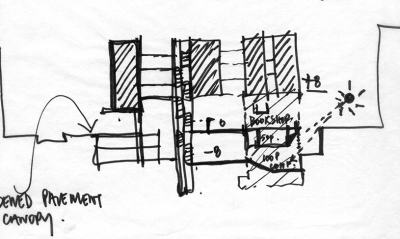University Luigi Bocconi
The idea behind the project was to make two worlds, one hovering over the other, with the public space of the city flowing between. A window to Milan has been created at the most public corner, where the Aula Magna is also located, asserting a symbolic presence; a register of the prestigious status of the University. The widened pavement forms a new urban space that reaches out to the city and beckons the visitor into the heart of the interior.
Taking the medieval market in Milans centre, Il Broletto, as a reference, the building has been designed as a place of exchange and the research offices are suspended to form a grand canopy that filters light to all the levels. This floating canopy allows the space of the city to overlap with the life of the University and allows internal and external public spaces to merge.
In response to the character of Milan hard on the outside and friendly on the inside Ceppo, a local stone, has been used to give a sense of depth, density and mass. Large concrete piers and wall beams at 25-metre-centres support roof beams from which the offices, courtyards and gardens are hung, giving the structure an elemental heroic quality.
For both architectural and environmental reasons the Aula Magna and the meeting room volumes are expressed as solids, either embedded and rising out of the ground, as is the case with the Aula, or cantilevered and floating over the street, as is the case with the meeting rooms. This solid edge forms a microclimate giving protection against solar gain from the west and south together with acoustic protection to the north. The strategy of the labyrinth of courtyards provides natural ventilation and natural light to the offices and to some of the public spaces below.

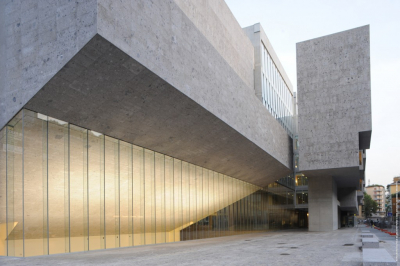
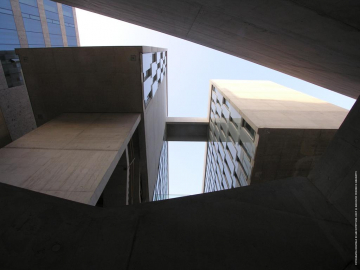
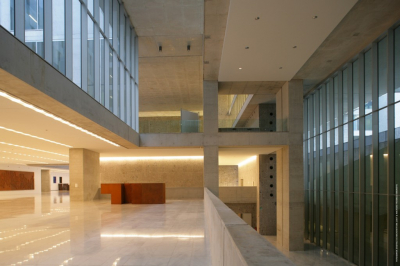
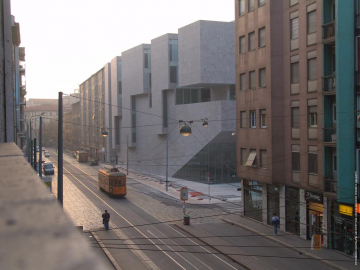
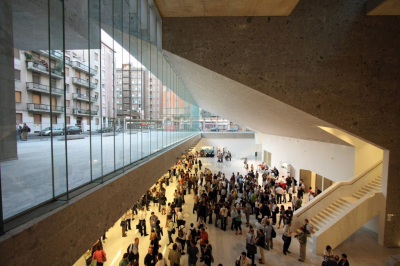
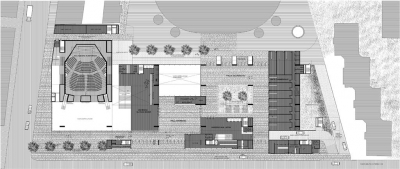
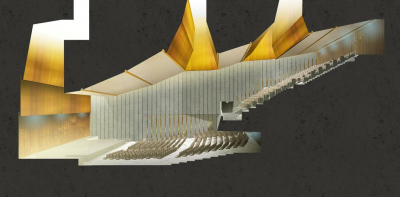
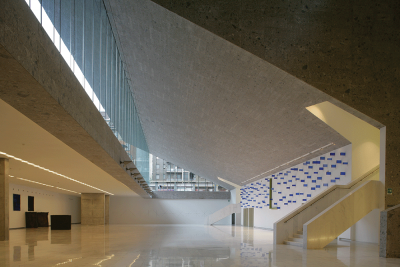
-[Convertido].jpg)
